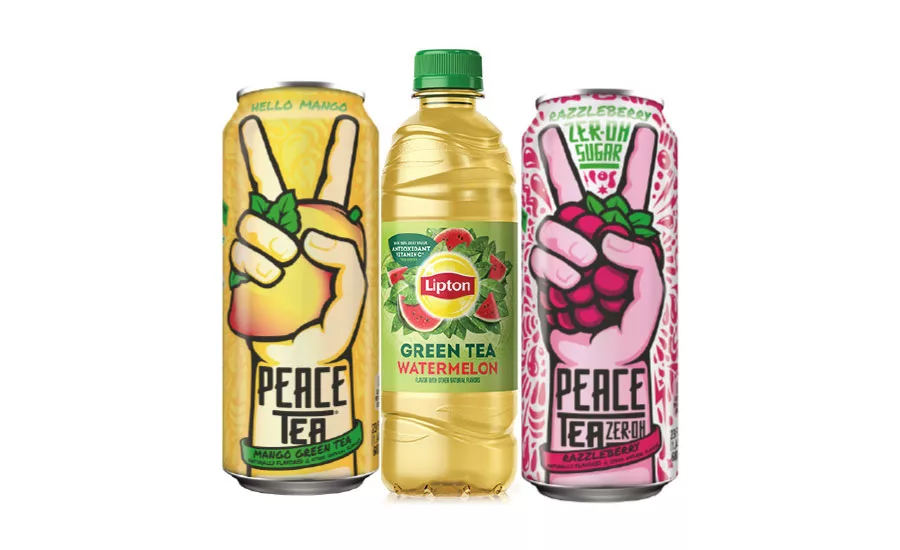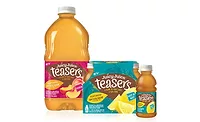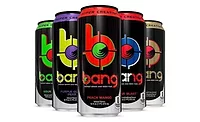2020 State of the Beverage Industry: Tea market sales relatively flat
Consumer demand enables companies to charge more for unique blends

Released in 1964, the TV commercial for Lucky Charms cereal features an animated Irish leprechaun reminding us that its toasted oat pieces and multi-colored marshmallow shapes are “Magically Delicious.” The tea market also is experiencing a “magically tea-licious” vibe because of its growing variety of flavors, strengths and varietals.
According to the New York-based Tea Association of the USA Inc., Americans consumed more than 84 billion servings of tea in 2019. The tea category offers a “rainbow of options,” including bagged, bottled, loose-leaf, hot, iced and cold brew.
Despite the fact that tea market sales have remained relatively flat, there have been small pockets of growth in the $6.1 billion ready-to-drink (RTD) tea category, which saw a compound annual growth rate (CAGR) of 2.2 percent from 2013-2018, noted Los Angeles-based IBISWorld’s December 2018 report titled “RTD Tea Production in the US” in the June issue of Beverage Industry.
Driving the category, refrigerated RTD teas generated dollar sales of $1.7 billion in U.S. multi-outlets and convenience stores for the 52 weeks ending May 17, a 6.2 percent increase over the prior-year period, according to data from Information Resources Inc. (IRI), Chicago.
Based on IRI data for the same timeframe, private-label refrigerated teas, comprising 15.4 percent of market share, was No. 1 with sales of $266 million, a 3.2 percentage point increase over a year ago.
While canned and bottled teas were the largest growth driver, amassing $3.9 billion in sales, the sub-segment saw a slight contraction of 1.1 percent over a year ago, IRI data reports. Tea bags and loose-leaf tea had sales of more than $1.3 billion, a 9.4 percent increase over the prior-year period. Lipton tea was No. 1 in the sub-segment with nearly $227 million in sales and 3.5 percent growth, while No. 2 Bigelow saw growth of 18.1 percent and sales of $203 million. Tea mixes notched $264 million in sales, with a 7.4 percent increase over a year ago.
(Individual brands)
| DOLLAR SALES | % CHANGE VS. PRIOR YEAR | MARKET SHARE | % CHANGE VS. PRIOR YEAR | |
| Lipton Pure Leaf | $788,507,844 | 7.1 | 20 | 1.5 |
| AriZona | $578,888,901 | 1.2 | 14.7 | 0.3 |
| Gold Peak | $425,178,493 | 4.6 | 10.8 | 0.6 |
| Lipton Brisk | $362,811,762 | -0.3 | 9.2 | 0.1 |
| Lipton | $298,889,610 | -4.5 | 7.6 | -0.3 |
| Category total* | $3,944,976,695 | -1.1 | 100 | --- |
*Includes brands not listed.
Source: Information Resources Inc. (IRI), Chicago. Total U.S. supermarkets, drug stores, gas and convenience stores, mass merchandisers, military commissaries, and select club and dollar retail chains for the 52 weeks ending May 17.
Surging in marketplace recognition was Teavana, a brand of Seattle-based Starbucks Corp. The line of hot tea sachets and loose-leaf herbal infusions saw a double-digit climb of 68.6 percent and sales of $16.6 million in multi-outlets and convenience stores for the 52 weeks ending May 17, IRI data states.
While retail sales of U.S. teas are slightly up, Roger Dilworth, senior analyst at New York-based Beverage Marketing Corporation (BMC), noted a slight decline in the overall tea market in the June issue of Beverage Industry. “The overall U.S. tea market declined by 1.9 percent in volume, with all segments — RTD tea, tea bags, iced tea mixes, loose tea and tea pods — declining,” Dilworth said. “Overall retail sales of U.S. tea grew by 0.8 percent. The decline in volume had much to do with RTD tea, which usually provides a lift to the U.S tea category. In general, tea bags have been fairly stagnant, while loose-leaf has performed a little better off a much smaller base.”
In its December 2019 “Tea in the US” report, Chicago-based Euromonitor International reported that competition for standard tea is mounting. “Black tea bags have a lot of competition to reckon with in the evolving beverages market. This competition is coming from the fruit/herbal tea category and from the organic segment,” the report stated.
In the same article, IBISWorld’s report noted that 65.8 percent of teas consumed were black teas, followed by green and white tea (21.1 percent) and herbal tea (13.1 percent).
(Individual brands)
| DOLLAR SALES | % CHANGE VS. PRIOR YEAR | MARKET SHARE | % CHANGE VS. PRIOR YEAR | |
| Private label | $266,111,629 | 3.2 | 15.5 | -0.5 |
| Gold Peak | $221,699,318 | 7.6 | 12.9 | 0.2 |
| Milos | $198,081,302 | 19.1 | 11.5 | 1.2 |
| Red Diamond | $136,171,961 | 2.2 | 7.9 | -0.3 |
| Turkey Hill | $117,855,464 | 1.1 | 6.9 | -0.3 |
| Category total* | $1,719,734,820 | 6.2 | 100 | --- |
*Includes brands not listed.
Source: Information Resources Inc. (IRI), Chicago. Total U.S. supermarkets, drug stores, gas and convenience stores, mass merchandisers, military commissaries, and select club and dollar retail chains for the 52 weeks ending May 17.
Data from New York-based Nielsen also pointed to the upward trajectory of RTD green tea with dollar sales of $18.6 million for the 52 weeks ending April 25, up 72.7 percent from $10.8 million a year ago. For the same timeframe, liquid tea and RTD tea generated sales of $3.1 billion and $116 million, respectively, an increase of 3.4 percent and 15.9 percent, respectively. RTD iced tea had sales of $28.5 million, a 1.2 percent increase.
Several of the big tea companies are releasing new products to quench consumers’ thirst for tea. In January, Simply Tea, a brand of The Coca-Cola Co., debuted in three flavors: Simply Tea with Lemon, with Raspberry and with Peach. In March, the company’s Peace Tea lineup added Hello Mango and Razzleberry Zer-OH to its iced tea portfolio in both 16- and 23-ounce cans.
Similarly, the Pepsi Lipton Tea partnership, a joint venture between Unilever and PepsiCo, released two new green tea varieties: Watermelon and White Peach. The teas contain 100 percent of the recommended daily value of the antioxidant vitamin C in each bottle, and contain 90 calories in each 16.9-ounce bottle, the company says.
As the tea market looks to gain back some of its losses from the past year, experts noted that health and wellness, premiumization, botanical blends and low-alcohol hard teas and seltzers could give a lift to the tea category.
For instance, in May, Las Vegas-based Two Chicks added Sparkling Vodka CuTea, a premium, vodka-based cocktail made with natural essences of peach, cucumber tea and thyme, to its portfolio.
With the number of flavor innovations and tea styles continuing to evolve, IBISWorld prognosticates “industry revenue to grow at an annualized rate of 1 perfect over the next five years to $6.5 billion in 2023.”
Looking for a reprint of this article?
From high-res PDFs to custom plaques, order your copy today!






